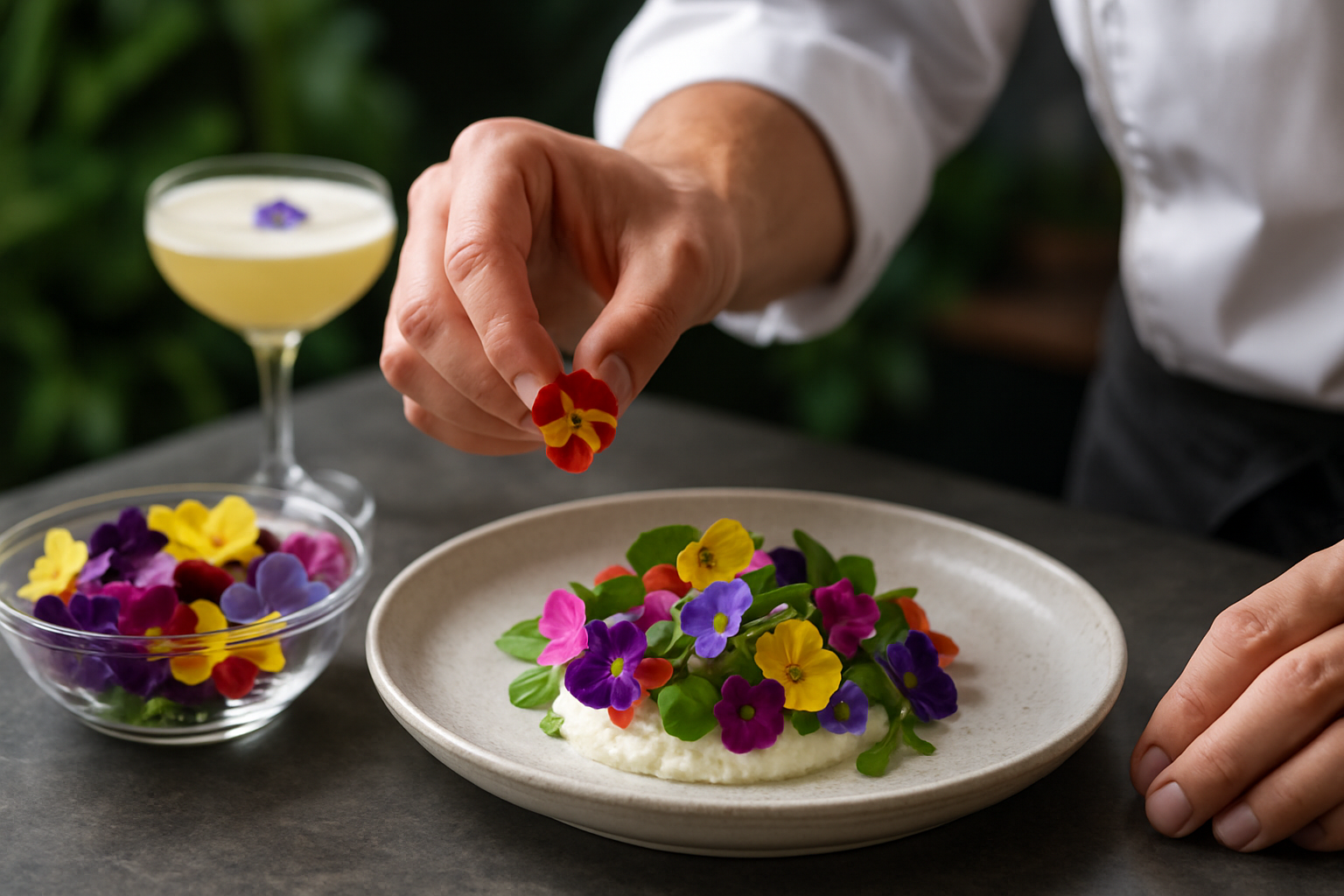Culinary Alchemy: Edible Flowers Bloom in Modern Gastronomy
Vibrant petals and delicate blooms are no longer confined to vases and gardens. The culinary world is embracing edible flowers, transforming dishes into visual masterpieces and introducing unique flavors to the palate. From high-end restaurants to home kitchens, these botanical wonders are reshaping the way we experience food, adding a touch of nature's artistry to every plate.

The appeal of edible flowers lies in their ability to add unexpected dimensions to dishes. Nasturtiums bring a peppery kick, while lavender offers a subtle floral sweetness. Calendula petals can replace saffron in some recipes, providing a golden hue and mild tang. As diners seek more immersive and multi-sensory experiences, edible flowers deliver on all fronts – visual appeal, aromatic intrigue, and flavor complexity.
From Garden to Plate: Sourcing and Safety
Incorporating edible flowers into your culinary repertoire requires knowledge and caution. Not all flowers are safe for consumption, and even edible varieties may pose risks if treated with pesticides or grown in contaminated soil. Sourcing becomes crucial in this floral culinary adventure.
Specialty produce suppliers and farmers’ markets are excellent sources for edible flowers, offering varieties that have been grown specifically for culinary use. For the ambitious home gardener, growing your own edible flowers ensures a fresh, pesticide-free supply. Popular choices include borage, chamomile, and marigolds, which are relatively easy to cultivate.
It’s essential to properly identify flowers before consumption and to introduce them gradually into your diet to check for any allergic reactions. When in doubt, consult with experts or reliable resources to ensure the safety of your floral ingredients.
The Art of Floral Cuisine
Integrating edible flowers into dishes requires a delicate touch and an understanding of flavor profiles. Chefs are developing innovative techniques to showcase these botanical ingredients, moving beyond simple garnishes to create dishes where flowers take center stage.
Crystallized flowers, preserved in sugar, add a whimsical touch to cakes and pastries. Flower-infused oils and vinegars capture the essence of blooms, allowing their flavors to permeate throughout a dish. Some chefs are even experimenting with floral fermentation, creating unique preserves and condiments that push the boundaries of traditional cuisine.
The key to successful floral cuisine lies in balance. The delicate nature of flowers means they can easily be overwhelmed by stronger flavors. Pairing them with complementary ingredients that enhance rather than mask their subtle notes is crucial. A light hand and an adventurous palate are the best tools in this culinary exploration.
Beyond the Plate: Floral Mixology
The influence of edible flowers extends beyond solid fare into the realm of beverages. Mixologists are embracing floral elements to create visually stunning and aromatically complex cocktails. From rose-infused gin to violet liqueurs, flowers are adding new dimensions to the world of spirits.
Non-alcoholic beverages are also getting a floral makeover. Hibiscus teas, elderflower cordials, and lavender lemonades are becoming increasingly popular, offering refreshing alternatives to traditional drinks. These floral concoctions not only please the palate but also provide a feast for the eyes, often garnished with floating petals or frozen flower ice cubes.
The trend extends to coffee shops, where baristas are experimenting with floral syrups and garnishes. Imagine sipping a chamomile latte topped with a delicate sprinkling of blue cornflower petals – a moment of zen in a cup.
Sustainability and Seasonality in Floral Gastronomy
As with any ingredient, the use of edible flowers in cuisine raises questions about sustainability and seasonality. Forward-thinking chefs and food enthusiasts are considering the environmental impact of their floral ingredients, opting for locally sourced and seasonally appropriate blooms.
This approach not only ensures fresher, more flavorful ingredients but also supports local ecosystems and reduces the carbon footprint associated with long-distance transportation. Seasonal cooking with flowers connects diners to the rhythm of nature, creating a deeper appreciation for the changing flavors throughout the year.
Some innovative chefs are taking this a step further by foraging for wild edible flowers, though this practice requires extensive knowledge and caution. Urban foraging and community gardens are also emerging as sustainable sources for edible flowers, bringing the farm-to-table concept to new, floral heights.
Useful Tips & Facts
• Always ensure flowers are pesticide-free and safe for consumption before use.
• Start with small amounts when introducing edible flowers to your diet to check for allergies.
• Pansies, violets, and nasturtiums are great beginner-friendly edible flowers.
• Remove pistils and stamens from flowers before eating to avoid bitterness.
• Freeze edible flowers in ice cubes for a beautiful addition to summer drinks.
• Some flowers, like squash blossoms, can be stuffed and fried for a savory treat.
• Edible flowers are often rich in vitamins and antioxidants, offering nutritional benefits.
As the culinary world continues to embrace edible flowers, we’re witnessing a beautiful fusion of nature and gastronomy. This trend invites us to look at our gardens and plates with new eyes, discovering the hidden flavors and beauty in the blossoms around us. Whether you’re a professional chef or an adventurous home cook, incorporating edible flowers into your culinary repertoire opens up a world of sensory delights and creative possibilities. As we move forward, the integration of these botanical wonders promises to keep our dining experiences fresh, exciting, and intimately connected to the natural world.





